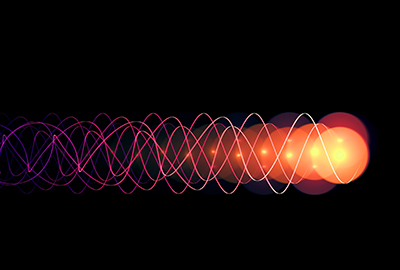 Although it’s had much success when used to map 3D environments, LiDAR has always had one major limitation. The more sensitive you make the sensors, the more background noise it picks up. And there’s no escaping noise from photons when they’re constantly streaming from the sun. But researchers have made a breakthrough with LiDAR photon noise reduction.
Although it’s had much success when used to map 3D environments, LiDAR has always had one major limitation. The more sensitive you make the sensors, the more background noise it picks up. And there’s no escaping noise from photons when they’re constantly streaming from the sun. But researchers have made a breakthrough with LiDAR photon noise reduction.
LiDAR Photon Noise Reduction Promises Sharper Images
LiDAR (Light Detection and Ranging) technology has been around for decades. LiDAR uses a pulsed laser and sensor to measure distance. Since LiDAR can scan an area very quickly, it’s useful for mapping 3D environments. Its capabilities have made it popular for autonomous vehicles and self-driving cars.
Researchers have recognized the potential for LiDAR in other applications such as 3D medical imaging but were always left with a challenge. When trying to map on such a detailed level, sensors that can detect only a few photons are needed. The problem is that photons are everywhere including sunlight or any other light source.
At the Stevens Institute of Technology, researchers created a way to cut the noise out of LiDAR imagery with a method called Quantum Parametric Mode Sorting. Instead of trying to use software-based post-processing to clean up noisy images, QPMS is able to check the light’s quantum signature with nonlinear optics.
The team came up with a method to imprint specific quantum properties onto an outgoing pulse of laser light. With the specialized optics, they were then able to filter the light so only the photons with the specific properties were registered by the sensor. This made the image an astonishing 40,000 times sharper.
Improved LiDAR Boosts 3D and Medical Imaging
With this recent advancement, LiDAR will be able to build on previous histories with 3D and medical imaging. Since telehealth services are becoming more popular for preventing, diagnosing, and treating disease, LiDAR scanning could provide an alternative to visiting a medical imaging center. Imagine simply using a handheld device to scan the body and the doctor receiving the results in real-time.
LiDAR’s use for 3D mapping will also be extended. Right now, when used on autonomous vehicles, LiDAR has a range of around 200m. This advancement to reduce photon noise could take LiDAR’s range up to 30km for mapping 3D environments outdoors. Improved LiDAR sensors could also help those who are visually impaired know their surroundings with audio call-outs as they navigate a room or walk down the street.
Need to create your own 3D map? Find the right camera for your next 3D imaging project.
